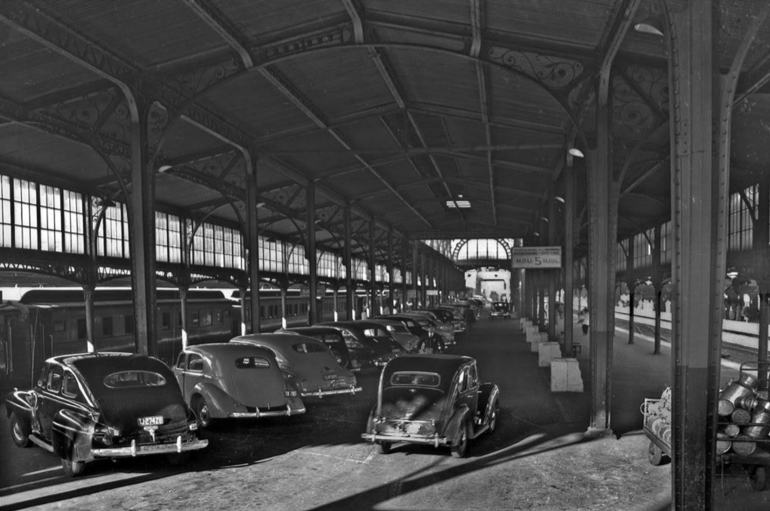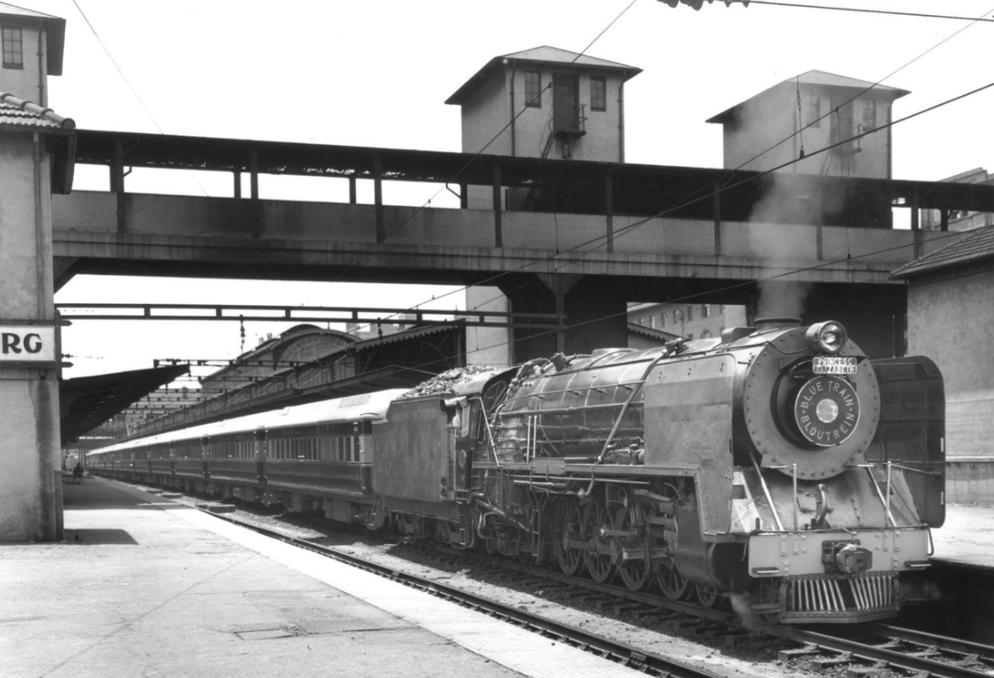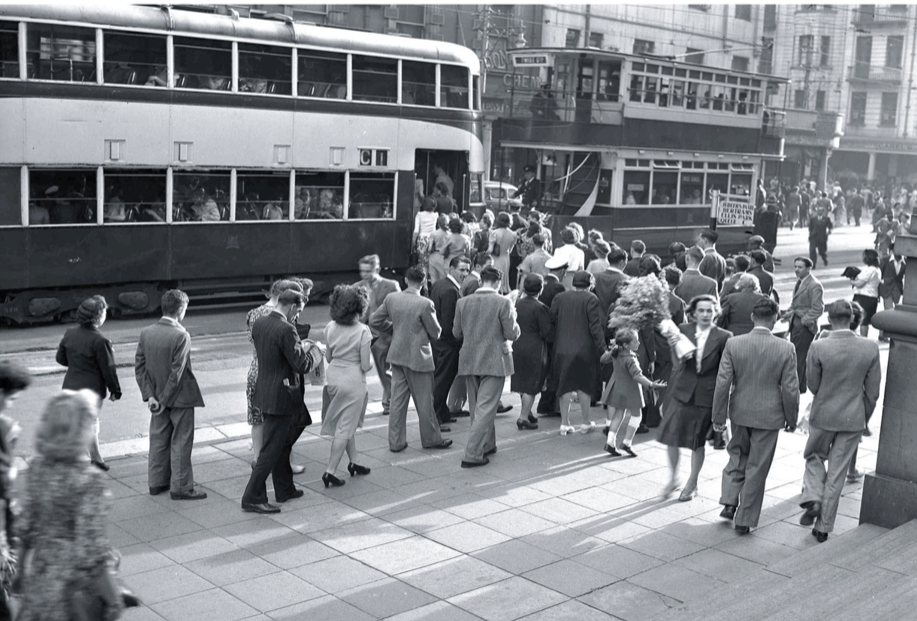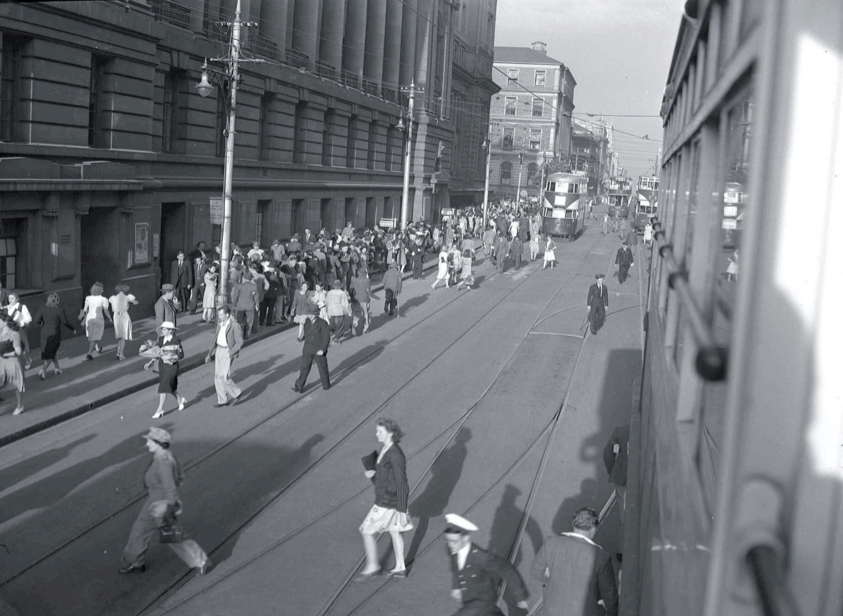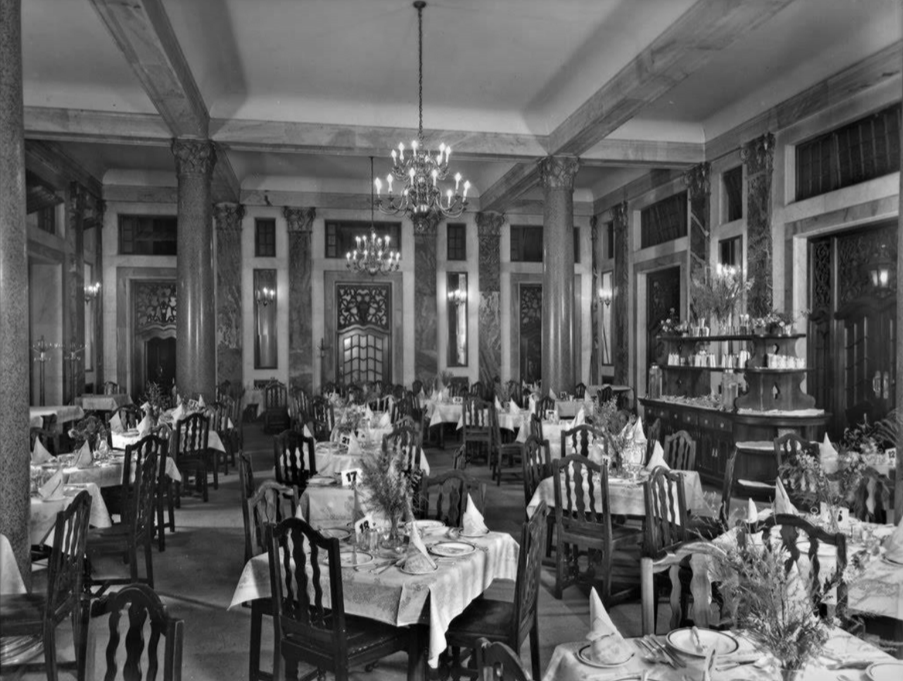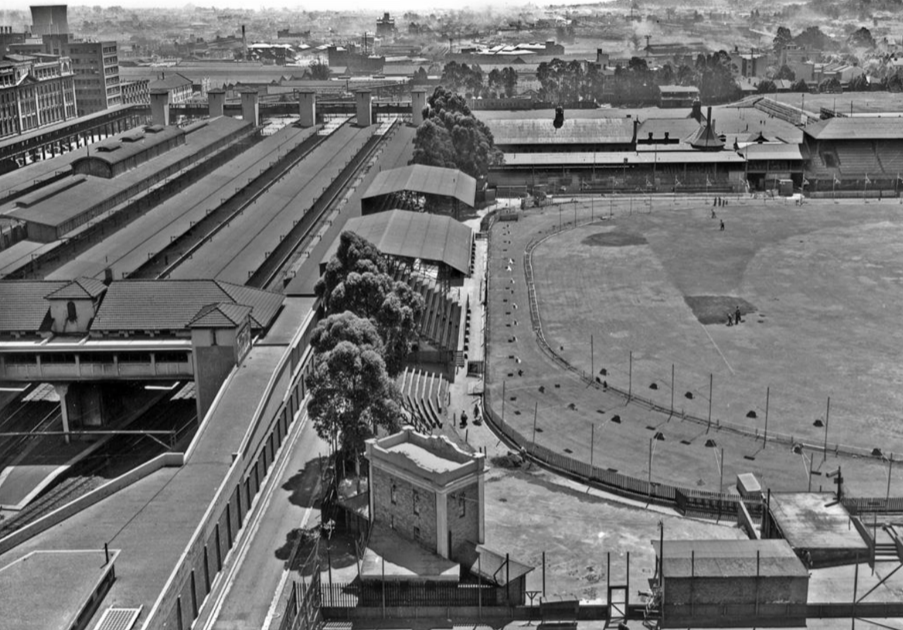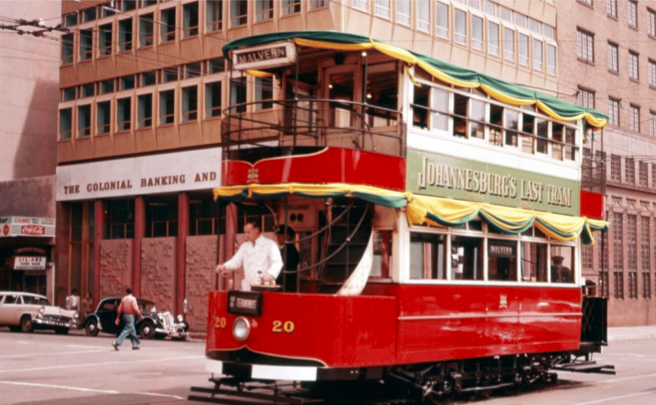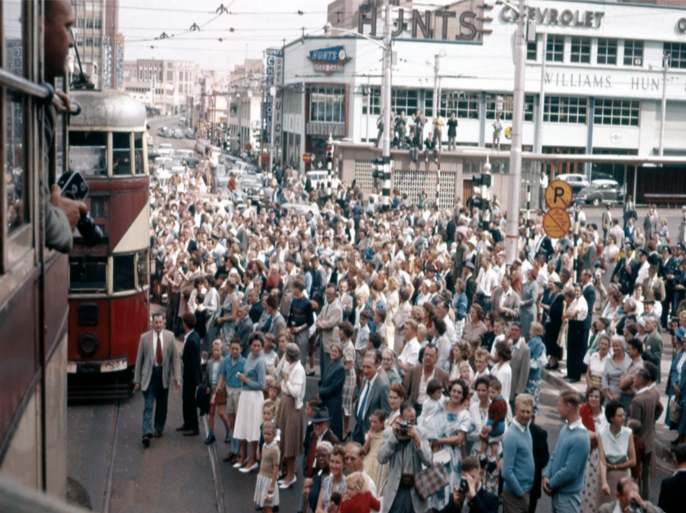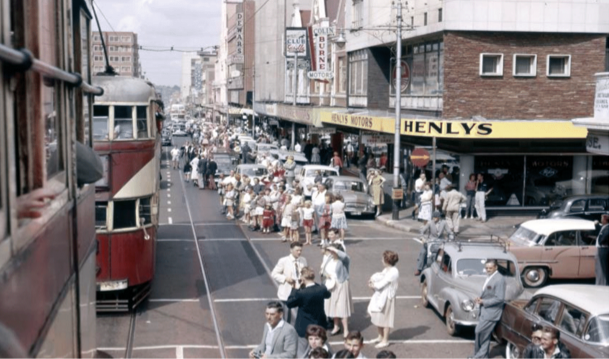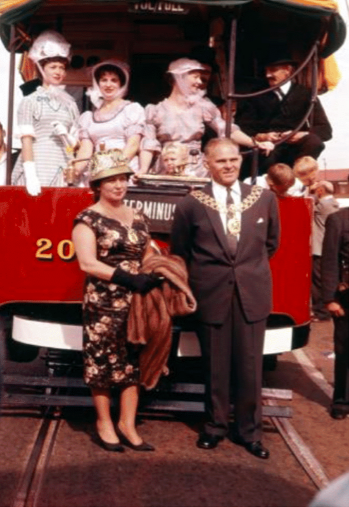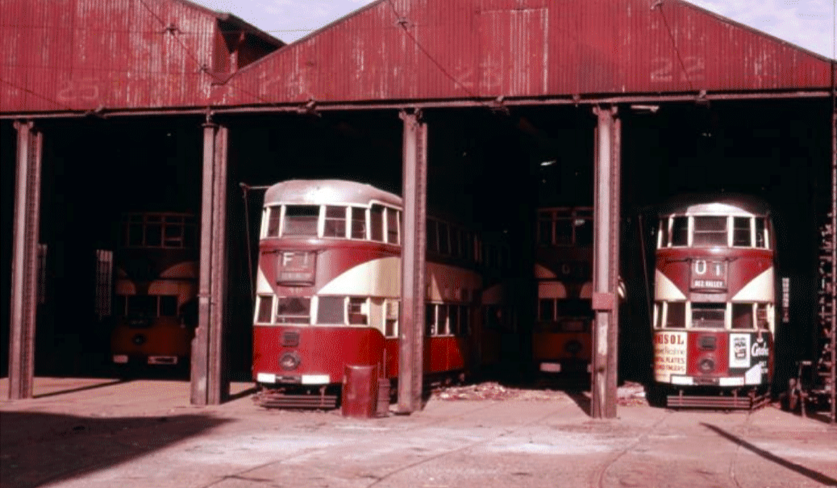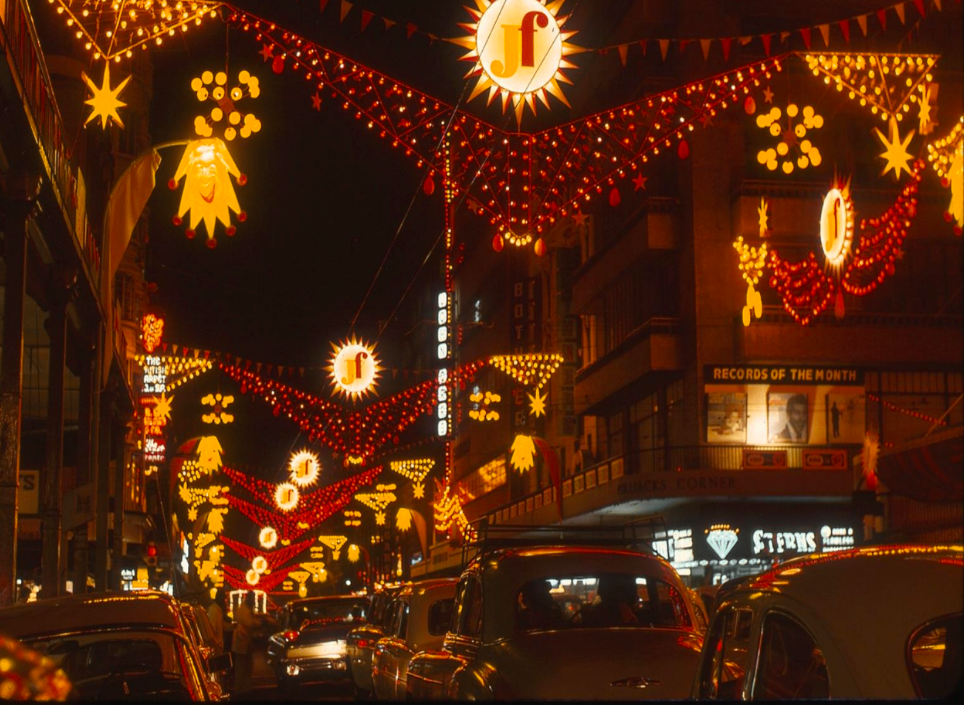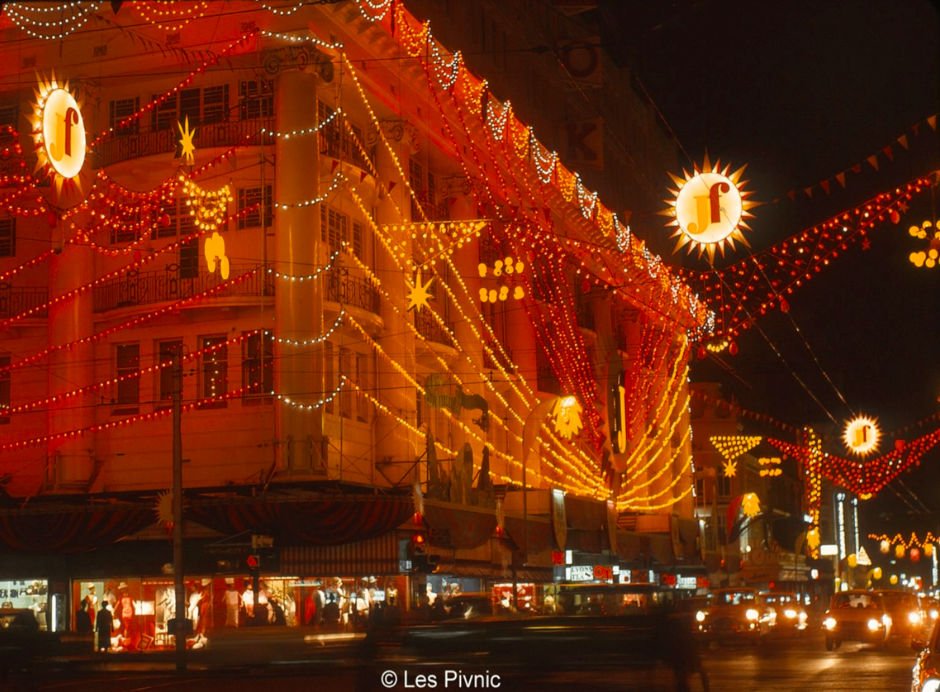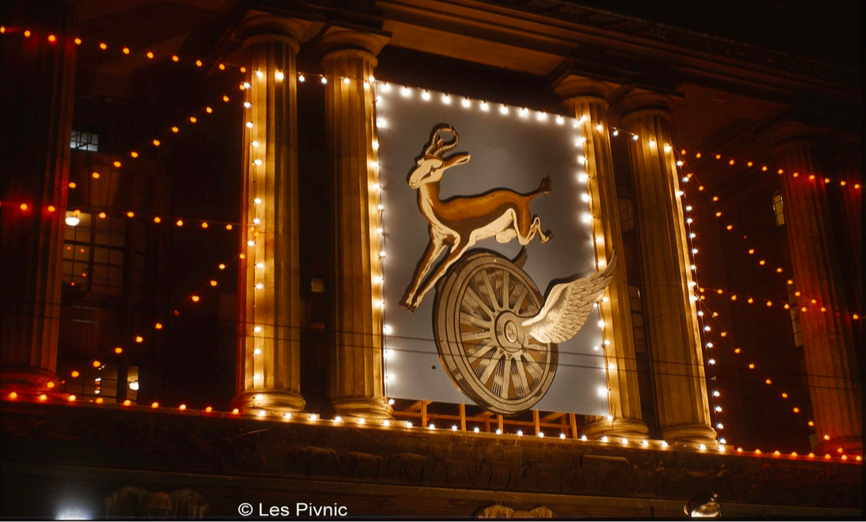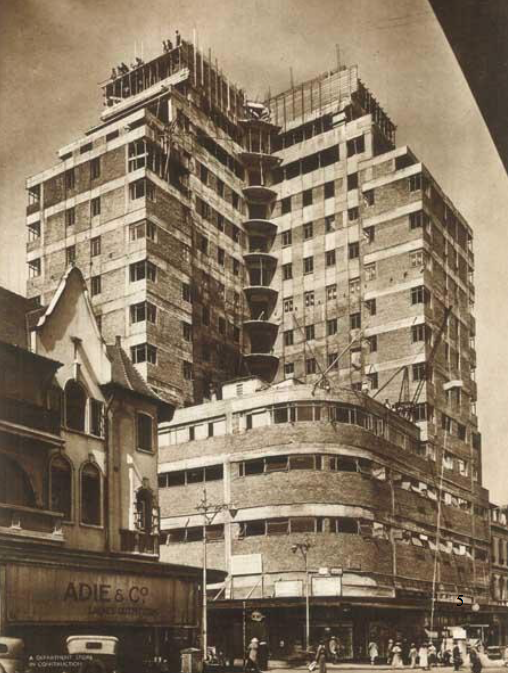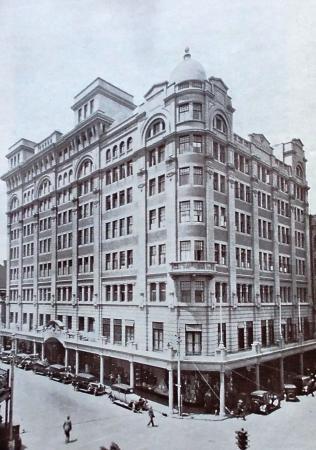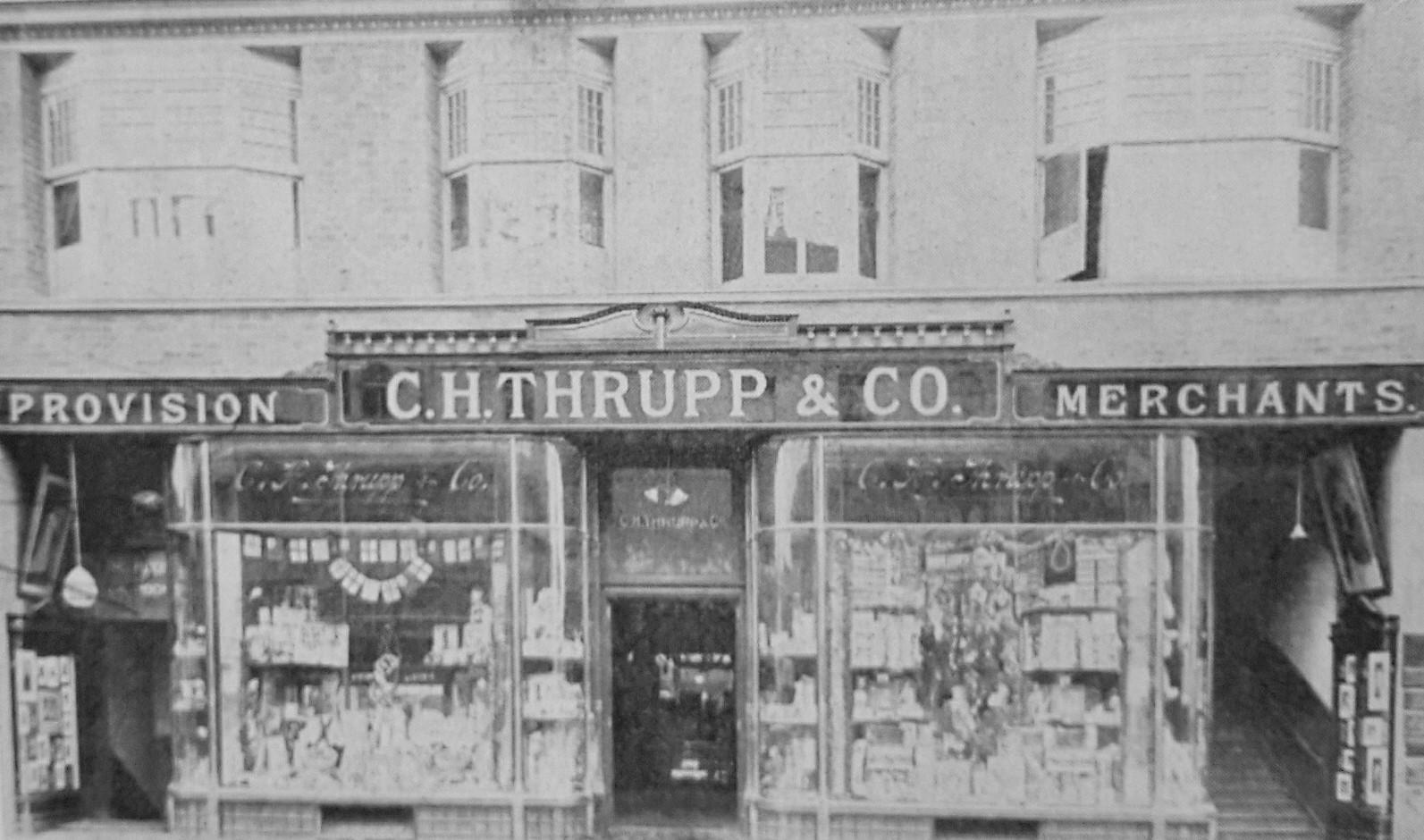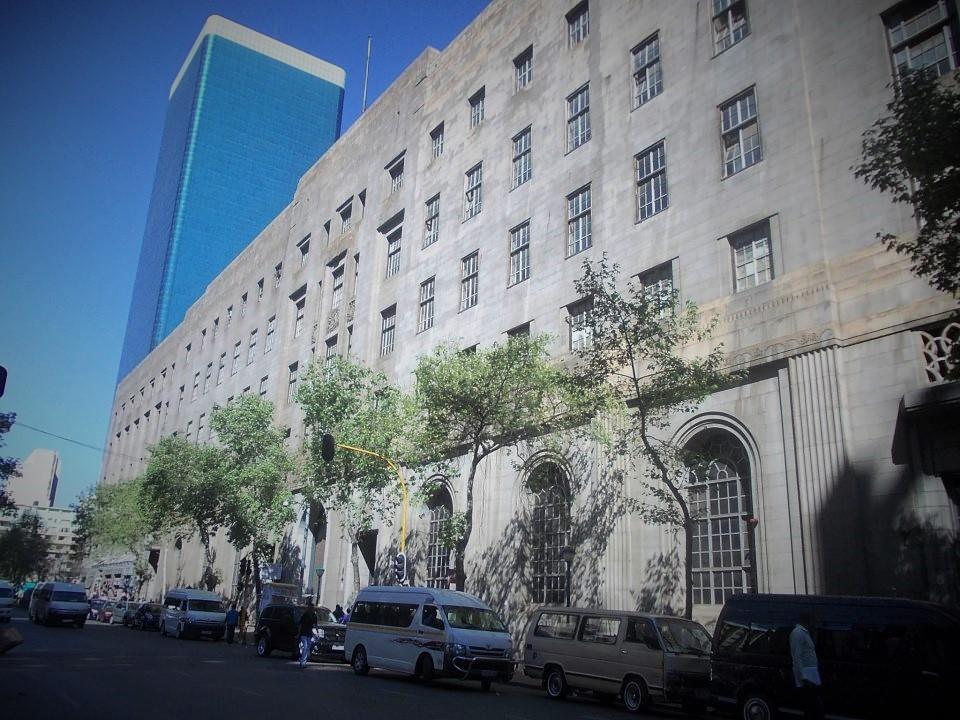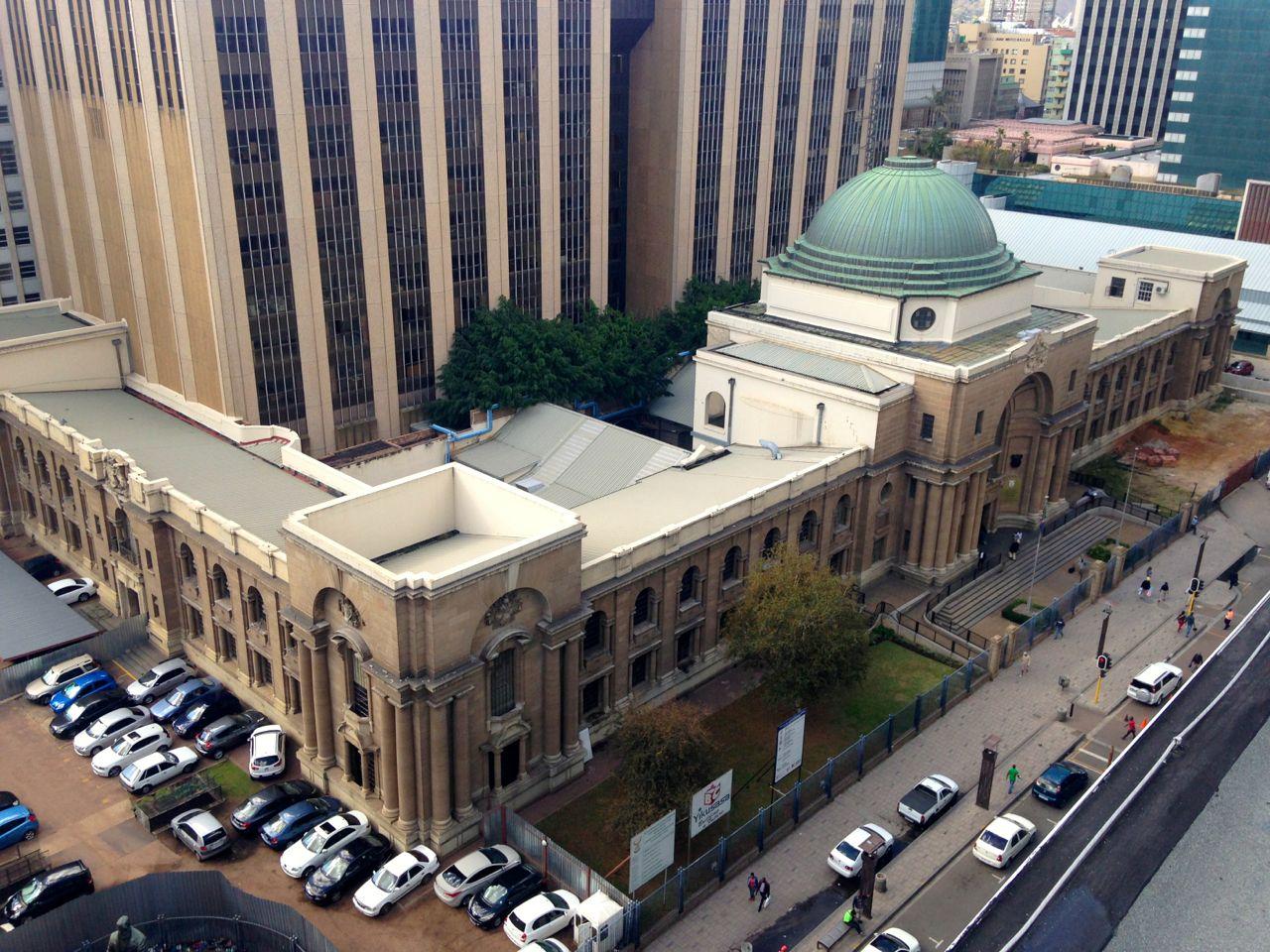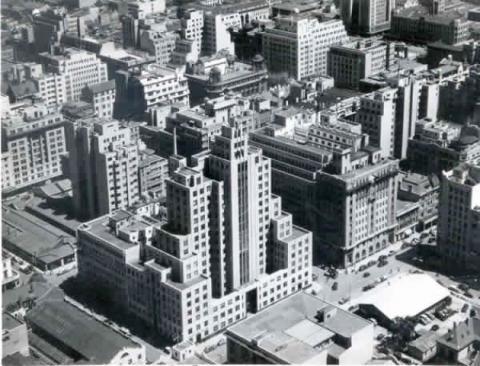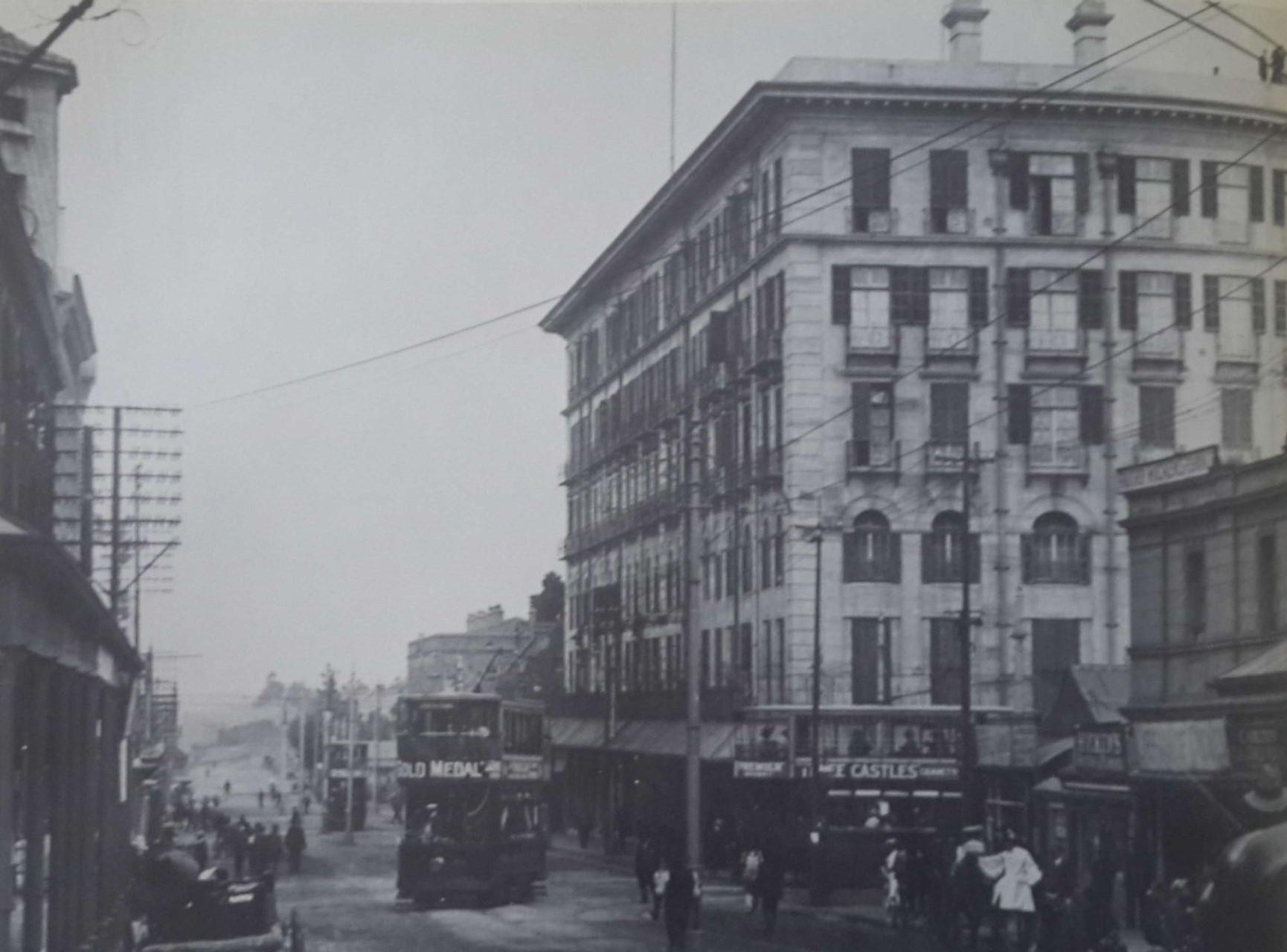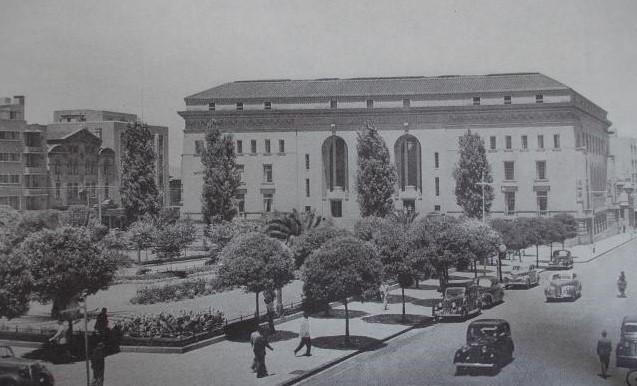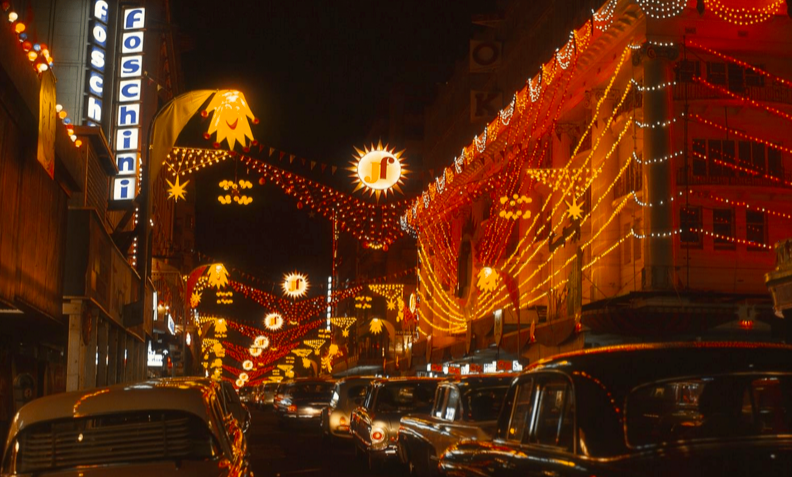
Disclaimer: Any views expressed by individuals and organisations are their own and do not in any way represent the views of The Heritage Portal. If you find any mistakes or historical inaccuracies, please contact the editor.
I returned to Johannesburg from Durban late in 1945 with my mother when the War in Europe was finally over. My dad would soon return from the Middle East after serving with the SA Medical Corps in Cairo at a military hospital.
We took up temporary residence at a boarding house in Edith Cavell Street opposite the Twist Street Primary School. It was time to adapt to our new life back in Johannesburg, the City of my birth in 1935 in Brixton. I attended Twist Street Primary for standard 3 to 5 before going on to high school at Parktown Boy's High in Wellington Road, Parktown. After settling in, my parents found a flat in Kilkenny Court in de Villiers Street off Claim Street and the main railway lines coming into Johannesburg from the eastern side of the City were only one block away from where we lived.
Perhaps I should explain that I already had an interest in trains and ships - actually anything to do with transport but my main interest at this stage was railways. I learnt to ride a bicycle - my dad was my tutor - and after a short wobbly period, I gained confidence to ride all over the City and especially to the Johannesburg Railway Station.
I would ride my bike to the station on a Sunday morning to witness the departure of the fast (1st and 2nd class only) passenger train to Cape Town. There was a road tunnel from Harrison Street under the railway lines direct to platforms 3, 4, 5 & 6 for cars taking departing passengers right to the platform from where their train would depart.
Park Station
Cycling through this tunnel was prohibited but I ignored that and rode through as fast as I could, so that I could see the mighty steam engine at the head of this prestige passenger train. After several Sunday morning visits to soak up the atmosphere, one of the regular drivers on this train called over to me and said that if I bought him the Sunday Times at the railway book stall, he would let me sit in the driver's seat of his class 15F locomotive. He would hand me one or two shillings to buy the newspaper. I would lean my bike against the locomotive's tender and rush down to the bookstall in the main concourse and buy the Sunday Times, rush back up the steps to the platform and head straight for his engine no.3101 that carried the name “Princess Elizabeth”. The driver's name was Joe White. Being in the “top-Link” of passenger train drivers stationed at Braamfontein Steam Locomotive Shed, Joe White would often be rostered to work the Blue Train from Johannesburg to Klerksdorp – this was the change-over point for a fresh engine to work the train on to Kimberley etc. In the photo below we see Joe White's class 15F locomotive at the head of the Blue Train ready to depart for Klerksdorp from platforms 5 & 6 at the old 1932 station.
Class 15F locomotive at the head of the Blue Train
My interest in railways extended to the Johannesburg Tramways and I would often ride the services to the Twist Street terminus at Clarendon Circle or the route to Troyeville where my grandparents lived. After a couple of years in Kilkenny Court, we moved to Brighton Court in Hillbrow on the corner of Claim and Ockerse Streets. Catching a tram to Hillbrow from the CBD became a regular part of my life. The photos below show the part of Market Street between Rissik and Harrison Streets which was the main starting point for trams to Hillbrow, Yeoville and Bellevue. The old rocking 4-wheelers usually served the Twist Street service with bogie cars covering the longer routes.
Twist Street Service - route A1
Yeoville Service – route B1 – terminus Louis Botha Ave.
Observatory Service – route B2 - terminus Delarey Street
In the photo above, the modern tram was known as a “liner” adapted from the word “streamliner”. They were specially imported in 1936 for the British Empire Exhibition held at Milner Park – the famous Rand Easter Show venue. The oldtimer behind the liner is a typical 4-wheeler used on the Twist Street route.
A Tram moving past the City Hall
My folks and I also used the Parktown North tram–route L1 to a stop just short of the terminus at Seventh Avenue, Parktown North, to visit an uncle and aunt who lived in that suburb. My uncle – Albert Ryley was the Chief Projectionist at the Lake Cinema in Parkview. My uncle fascinated us with humorous stories about life working as a projectionist for the ACT group controlling almost all the cinemas in greater Johannesburg. On one occasion he described how one of his colleagues who was the Senior Projectionist at the Colosseum Theatre in Commissioner Street in the City, was harassed by his younger assistants in the projection room.
In those days, the sound on a professional film was generated by passing a beam of light through the optical sound track recorded on the film. The beam of light was passed through a tube from the bulb to the film channel and through the film sound track - producing the synchronized sound that married with the image on the screen. These youngsters were apparently upset by the senior man when he reprimanded them for some misbehaviour in the cinema. They took revenge by plugging the light tube with cotton-wool thus preventing any sound from reaching the speakers behind the screen. All cinemas had several projectors in the projection room so that reels of film in correct following order could be threaded on two or more projectors to provide continuous performance of the film. The cotton-wool would be stuffed into the light channel of one of the projectors and as that machine came on line to continue the film there was no sound! It normally didn't take long for the audience to voice their displeasure at suddenly being inflicted with a silent movie! This particular stunt was discovered and rectified with suitable warnings to the younger staff employed in the projection room.
Getting back to my love of railways, it extended to railway food as well – from the humble SAR “Pie and Gravy” to a lavish meal of Blue Train standard in the Station Restaurant in the concourse of the old 1932 station. This Restaurant was known as the Blue Room and my parents regularly took Sunday lunch there as a special treat for the family. The photo below shows the Blue Room in all its glory!
The Famous Blue Room
In the late 1940s my dad was very keen on football and I would accompany him on a Saturday afternoon to the old Wanderers Ground adjoining the the old Station to watch a league match between Marist Brothers (his favoured team) and their opponents for the day. A real Derby was when Marist Brothers faced arch-rivals - The Rangers on the Wanderers Ground. The photo below shows the old Wanderers Ground backing directly onto the old Johannesburg Station. In the early 1950s, the Railways laid claim to the Wanderers sports facilities including the main football ground that also housed the greyhound racing track where meetings would take place every Friday evening. The Wanderers moved their sporting facilities out to Kent Park, Illovo on Corlett Drive. Dog racing here as well as the other track at Wembley Stadium, south of the City was outlawed and discontinued.
The greyhound track can also be seen in this old photo, running around the circumference of the football ground.
Old photo of the Wanderers with Greyhound Track
Moving on to my early adult years in Johannesburg, an occasion that stands out in my memory, occurred on the 18th of March 1961. Johannesburg said farewell to its trams! The following images are photos of the final day when crowds gathered in the City to say goodbye to their trams. Motorists in the City would get angry with tram drivers clanging their gongs when they pulled up behind a car that was tardy in moving forward with the traffic. But when the time came to say goodbye to our trams, many shed a tear!
The 4-wheeler no.20 that was specially prepared to carry the dignitaries on a final trip to the Malvern Terminus
The crowds gathered in their hundreds if not thousands to bid farewell to the old trams. This photo was taken on the corner of Eloff and Main streets from one of the trams following No.20 to Malvern Terminus.
Trams heading down Main Street
The Mayor and Mayoress posed for a photo with old No.20 at the Malvern Tram Terminus
The next day I visited the tram sheds to say my own personal “Goodbyes” to those dear old trams that had served us so well in Johannesburg for so many years.
Coming forward to September 1964, I was now married and my wife and I had a wonderful time visiting the City at night to walk around the CBD and take in all the illuminations of the “Johannesburg Festival”. Here are several photos of various buildings illuminated for the Festival.
Eloff Street with crowds of cars!
OK Bazaars really put in a magnificent effort for the Festival.
Main entrance of the Johannesburg Station
Moving on to other memories that come to mind from those days in the 1950s, are the departmental stores and specialised shops that we had in the City. I remember John Orrs in Kerk Street, Stuttafords in Pritchard Street, Ansteys in Jeppe Street and Cleghorn & Harris in Eloff Street that had the curved shopfront windows that gave the viewer the effect of no glass between themselves and the merchandise on display. All these top stores had lady lift operators that would announce the particular merchandise available on each level. These stores also had upmarket tea rooms where culinary delights could be savoured.
Old photo of Ansteys under construction via Artefacts
Old photo of Stuttafords
Then, a level down from the top stores, we had OK Bazaars, CTC Bazaars where price tags were not as high as the leading stores.
We also had specialised shops like A. W. Yardley, a model shop in Kerk Street where a wide variety of aircraft, shipping and train models could be bought. I remember other specialised shops like Henwoods and Fattis International House for housewares and other goods. The Central News Agency (where I started my working life) had several stores in town - the head office was on the corner of Commissioner & Rissik Streets while a special branch known as “Handle House” was in Eloff Street and specialised in books for university students.
Thinking of specialised shops, one cannot exclude Thrupp & co., a very special grocery shop that still employed men with light brown dustcoats to attend to your every need – a lb of white sugar or similar measured on an Avery balance scale. At a later date, Thrupps also opened an upmarket bottle store in Eloff Street.
Old photo of the Pritchard Street Thrupps
Come to think of it, we had an abundance of specialised shops in downtown Johannesburg. Bothners, Polliacks and Recordia were the places to visit for your musical needs – be it an instrument like a trumpet or 78rpm shellac gramophone records. They had small sound-proof booths where one could listen to a particular record before deciding to buy it or not.
Shepherd & Barker in Jeppe Street was known as the shop for quality furniture. At the other end of the spectrum we had a flourishing gent's hairdresser known as “French Hairdressers” in Bree Street. The long row of chairs where each one was attended by a gent in a white dust-coat who had all the training to provide a 1st class haircut. This business also sold toiletries and other goodies for both men and women at bargain prices!
There was Mcculloch & Bothwell - specialists in school uniforms and ME Stores for those going camping - anything from a well-padded coat to special walking boots.
Then there were other noteworthy buildings offering general services like the grand GPO in Jeppe Street with its massive main hall where one could buy stamps or send a telegram or simply pay one's telephone account. The old General Post Office in Rissik Street opposite the City Hall was still in service but as a secondary location to the Jeppe Street HQ.
A more recent photo of the Jeppe Street Post Office
I had a friend who was a senior employee in the Public Works Department in Johannesburg. He said to me one day - “Would you like to see and walk through the tunnel between Jeppe Street Post Office and the Johannesburg Railway Station?” I jumped at this rare opportunity and enjoyed a fascinating walk through that tunnel – coming out at the Station. This tunnel was used to convey all the hundreds of mail bags from the GPO to the Station on a daily basis, to be placed in vans on the various passenger trains to all parts of the Union. Incoming mail was handled in a similar way on the continuous conveyor-belt in the tunnel.
While thinking about Jeppe Street and the GPO, one needs to mention that the portion of Jeppe Street between Eloff and Von Wieligh Streets could be regarded as the “Medical Centre” of town because the surrounding buildings like Lister Building for example, housed the medical profession – doctor's rooms etc.
The High Court buildings were also impressive on Pritchard Street, facing Kruis Street. On the side opposite to the Courts was the well-known paint and decorating firm – Herbert Evans & Co. Also, worth a mention were the large cinemas in the CBD. The Colosseum, The Empire and His Majesty's in Commissioner Street; The 20th Century in President Street; The Metro in Bree Street and the Plaza in Rissik Street. All these cinemas could be called “grand movie palaces” of their time. To attend a film at one of them on a Saturday evening was an event that called for collar and tie and a dinner suit for men and the equivalent evening wear for ladies.
Recent photo of the High Court Building
Tickets to a film was usually preceded by a good meal at one of the top restaurants like the Rex off Eloff Street or maybe the East African in Bree Street if memory serves. There were several others like the “Delmonica” offering a wide variety of food. A popular daytime venue for tea and cake was “Fanny Farmer's Cafe” upstairs on the first floor of a building facing onto Eloff Street on the corner of Pritchard Street.
To the general public, a lesser-known merchant was Arthur E. Harris who had premises in a building in Market Street just off Kruis Street. This merchant happened to be the local agents for Meccano construction sets as well as Hornby trains and Dinky Toys. As a schoolboy addict for Dinky Toys, I visited that merchant on a regular basis to buy another Dinky Toy bus or car for my collection.
We also had “Motor Town” in Johannesburg. This was a concentrated group of motor dealers on Eloff Street starting from Main Street right through to Eloff Street Extension. Famous names come to mind like Williams Hunt –agents for American Chevrolet and Buick cars; Grosvenor Motors for Ford, Mercury and Lincoln cars; Connocks for British makes like Morris, MG and Riley. A bit further out in Eloff Street Extension we had Rillstone Motors – agents for American Dodge cars.
John B. Clarke were the agents for Wolseley cars – a division of the Morris group.
Johannesburg was also noted for its highrise buildings like ESCOM House - the 21-storey and tallest building in the City for many years. The City also had its share of gentleman's clubs - notably “The Rand Club” and “The Union Club”.
Escom House from the air
Any description of the old CBD would not be complete without mention of a few of the grand hotels in the City. Top of the group would undoubtedly be The Carlton and I'm referring to the old Carlton on Eloff Street between Market and Commissioner Streets. This hotel played host to many world famous dignitaries and film stars etc. The Lutjie's Langham Hotel on Kerk Street was another fine establishment as was the Grand National Hotel and there were others too numerous to mention here.
Old Carlton Hotel
Other places that spring to mind in the 1950s in the CBD are the Central Fire Station with its long row of folding doors that could be opened quickly to allow a wide range of fire engines to leave the building in a hurry to attend a fire. The fire engines themselves were also something to behold – from a relatively small unit to a large machine on multiple axles carrying a very large extension ladder!
An imposing building was the Main Public Library facing on to the Library gardens that were beautifully maintained by the City Council. At the opposite end was the Cenotaph that featured during the year when notable military dates were commemorated by parades of the famous Transvaal Military Regiments. The Library Building also housed the Africana Museum as well as a magnificent Reference Library where one could find info on virtually anything that might come to mind – remember – in those days we didn't have the luxury of a PC in the home!
Old photo of the Johannesburg Public Library
About the author: Les was born in a private house in Brixton on July 7, 1935. He attended Twist Street Primary School from 1946 to 1948, after returning from Durban where he spent 3 years during World War II when his dad was in the Army. He attended Parktown High and after that, he started his working life for the CNA in their Fancy Goods Department. Les then trained as a window dresser with Jacoby & Co in Kerk Street where he remained for 15 years of his working life. All this time, his heart was in railways and he had made a private study of the SAR's steam locomotives and other rolling stock - especially dining cars. This led to an invitation from the SA Railway Administration to join the SA Railway Museum as Assistant Curator in July 1972. He was overjoyed at this development and remained in their employment for the remaining part of his working life. During this time, SA Transport Services published his book on the history of all catering vehicles used on the SAR - dining/kitchen/lounge cars etc. He was boarded on pension in 1989.
Comments will load below. If for any reason none appear click here for some troubleshooting tips. If you would like to post a comment and need instructions click here.

